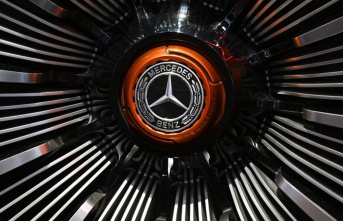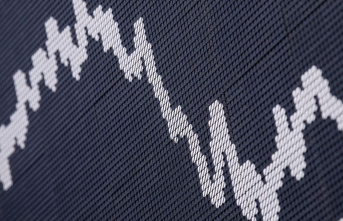Winter is over for the operators of German gas storage facilities. "Against the background of rising temperatures, we can now regard the winter as over," said the managing director of the gas storage association Ines, Sebastian Bleschke, the German press agency dpa. Smaller storages are also currently taking place.
In the next few days and weeks, colder temperatures could lead to withdrawals. "But we will certainly increasingly go into the storage phase." The so-called storage year ends for storage operators at the end of March.
With the fully filled gas storage facilities and high gas imports, the gas supply was secured last winter, said Bleschke. "However, the mild temperatures were also decisive." The reservoirs were full to the brim in the winter: on the morning of November 14, 2022, a total filling level of 100 percent was recorded.
Total level at 63.89 percent
The total filling level of the German gas storage facilities has remained almost unchanged for several days. On Wednesday morning it was 63.89 percent. That was 0.01 percentage points more than the previous day, according to preliminary data from the European gas storage association GIE on Thursday. On the morning of March 16, the fill level was 63.89 percent. In the meantime, it had fallen to 63.67 percent, the lowest level of the year so far. For comparison: Exactly one year earlier, the German storage facilities were only 24.8 percent full.
The largest German storage facility in Rehden, Lower Saxony, was 81.5 percent full on Wednesday morning. The fill level in the EU was 55.6 percent. That was 0.04 points less than the day before.
There was no gas shortage
According to the network agency, gas consumption last week was 26.3 percent below the average consumption for the years 2018 to 2021. The main reason may have been the comparatively mild temperatures, which were an average of 3.2 degrees above the reference value.
It should be noted that, in addition to being withdrawn from the storage facilities, gas continues to flow to Germany through pipeline imports. On Tuesday, according to the Federal Network Agency, Germany received natural gas from Norway, the Netherlands, Belgium and via new LNG terminals on the German coasts.
Against the background of the comparatively high filling levels, the Federal Network Agency adjusted its gas situation assessment on Tuesday. Until then, the authorities had spoken of a "less tense situation than at the beginning of winter" and described a gas shortage as unlikely, but since then it has been said: "A gas shortage last winter could be prevented." Furthermore, the preparation for winter 2023/2024 is described as a "key challenge". "That's why economical gas consumption remains important," says the authority.







